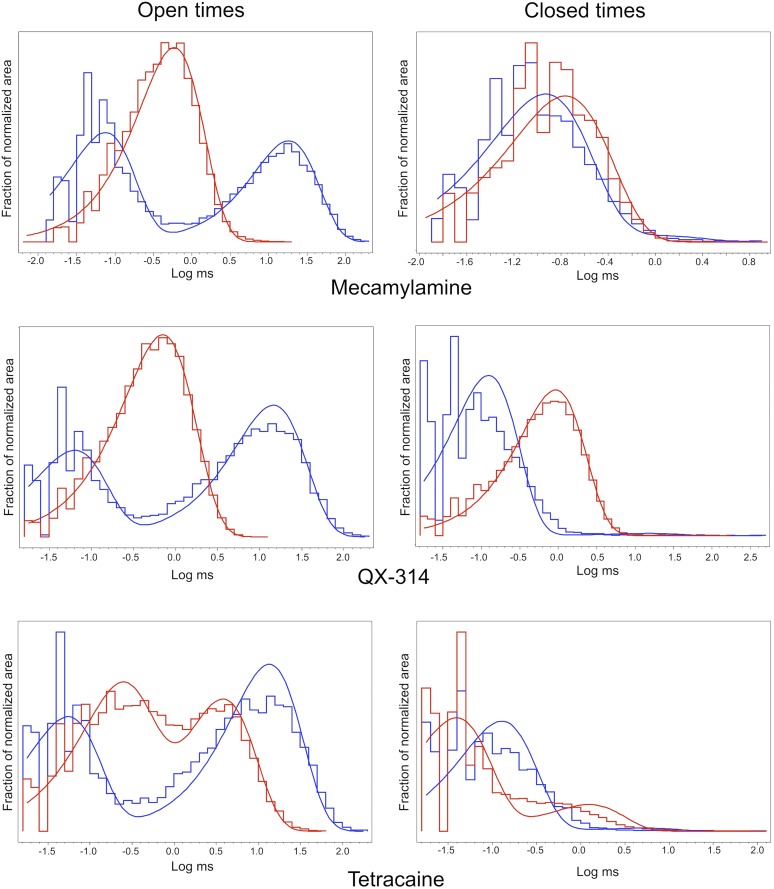Fig. 5.
Effects of small reversible antagonists on the apparent open and closed durations in the PNU-120596–potentiated α7 single-channel bursts. Control bursts were evoked by 300 μM ACh and 10 μM PNU-120596 either before the antagonist coapplication or after the removal of external antagonist from the same patch. Note that although low-amplitude infrequent subconductance events were observed, for these analyses the event detection thresholds were set to capture only the main conductance state of the receptor, and times in the subconductance states were taken as closures. (Top) Fit histograms displaying intraburst open and closed durations of 32 control bursts (blue line) from 7 patches (19,850 events), and 35 bursts from 8 patches (32,104 events) treated by 300 μM ACh, 10 μM PNU-120596, and 30 μM mecamylamine (red line). (Middle) Fit histograms displaying intraburst open and closed durations of 26 control bursts (blue line) from 16 patches (9104 events), and 57 bursts from 18 patches (85,090 events) treated by 300 μM ACh, 10 μM PNU-120596, and 30 μM QX-314 (red line). (Bottom) Fit histograms displaying intraburst open and closed durations of 30 control bursts (blue line) from 10 patches (9232 events), and 44 bursts from 9 patches (28,835 events) treated by 300 μM ACh, 10 μM PNU-120596, and 10 μM tetracaine (red line). Only the bursts lasting longer than 1 second and with no obvious subconductance were selected for analysis to ensure enough intraburst events. Fit parameters are listed in Table 2. To compare data sets with varying numbers of events, each of the histograms was normalized to have a total area equal to one so that the y scaling was adjusted automatically for each histogram.

